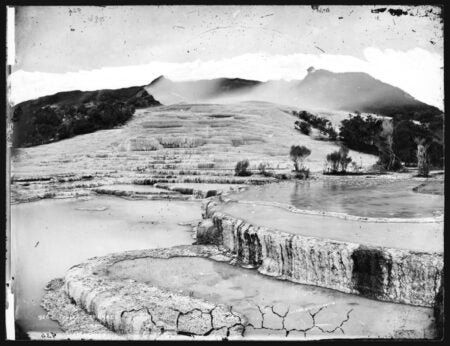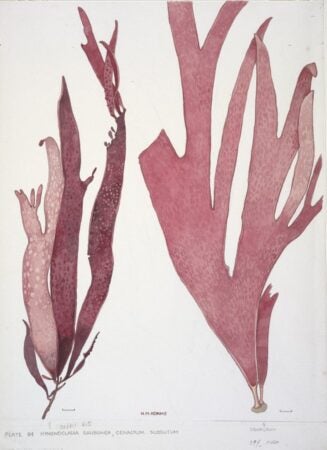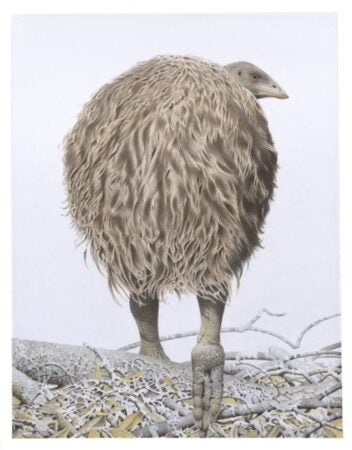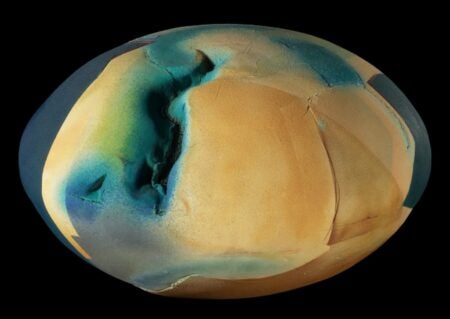New: 45,000 open images from Museum of New Zealand Te Papa Tongarewa
The Open: Museum of New Zealand Te Papa Tongarewa collection is now available, featuring a selection of more than 45,000 images under Creative Commons licenses.
- Charles Blomfield. White Terraces. 1882. Museum of New Zealand Te Papa Tongarewa. No known copyright.
- Alfred Burton. White Terraces. ca. 1885. Museum of New Zealand Te Papa Tongarewa. No known copyright.
In 1992 the National Museum and the National Art Gallery of New Zealand united to become Te Papa Tongarewa (meaning “container of treasures” in Māori), a partnership between Tangata Whenua (Māori, the indigenous people) and Tangata Tiriti (a Māori term for non-Māori people). The current collection in Artstor offers a broad and rich view of the Tangata Tiriti — arts and culture, society and history, and the natural world of New Zealand; in accordance with the cultural rights policy of the museum, we direct you to their site to view items/taonga from the Māori.
Some of the most striking works in the selection document the natural phenomena and biodiversity of the remote Pacific island nation. We are reminded of the volatility of the landscape by the renderings of the White Terraces, a tourist mecca of extraordinary formations that was obliterated by the volcanic eruption of Tarawera in 1886, in a painting by Charles Blomfield, 1882, and a glass negative of the site taken by Alfred Burton, ca. 1885.
The prolific flora of New Zealand feature in the selection, most notably in a series of more than 1,500 botanical illustrations by Nancy Adams, a longtime curator and researcher at the museum, with a specialty in seaweeds, highlighted by red specimens shown here and more fully documented in an award-winning book.
- Nancy Adams. Red Seaweed – Halymeniaceae – Pachimenia lusoria and P. crassa. Museum of New Zealand Te Papa Tongarewa. CC BY-NC-ND 4.0.
- Nancy Adams. Rhodymeniaceae – Hymenocladia sanguinea and Cenacrum subsutum. Museum of New Zealand Te Papa Tongarewa. CC BY-NC-ND 4.0.
The scientist/artist Paul Martinson has recreated dozens of extinct bird species native to New Zealand in exacting, photorealist watercolors, including varieties of the long-lost giant Moa, shown here both coming and going. Self-professed as having “one foot in science and one foot in art,” Martinson documented 58 lost species for a book published by Te Papa in 2006. [1]
- Paul Martinson. Heavy-footed Moa. Pachyornis elephantopus. From the series: Extinct Birds of New Zealand. 2005. Museum of New Zealand Te Papa Tongarewa. CC BY-NC-ND 4.0.
- Paul Martinson. Mantell’s Moa. Pachyornis geranoides. From the series: Extinct Birds of New Zealand. 2005. Museum of New Zealand Te Papa Tongarewa. CC BY-NC-ND 4.0.
Finally, in the spheres of ceramic artist Brian Gartside from the “Antipodes” series, 1991, we recall the specific geography of the land and its opposite relation to the northern hemisphere:
- Brian Gartside. On the theme “Antipodes” IV. 1991. Museum of New Zealand Te Papa Tongarewa. CC BY-NC-ND 4.0.
- Brian Gartside. On the theme “Antipodes” I. 1991. Museum of New Zealand Te Papa Tongarewa. CC BY-NC-ND 4.0.
“This country has always impressed me as a very ‘geographical’ land. Dynamic geographical features dominate. Agents of erosion are active, and movement and potential changes are evident. Skies, activated by two large oceans, put on a continuous show of powerful flowing images.” [2]
We invite you to explore the resources of Te Papa Tongarewa and discover more wonders down under…
– Nancy Minty, collections editor
1. Extinct birds on show in digital art exhibition, Oct. 20/19, Kate Guthrie.







